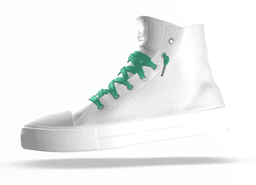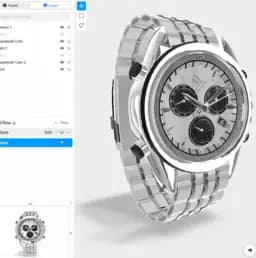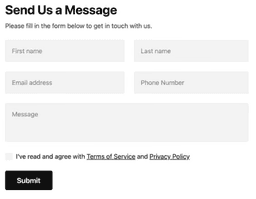Browser Compatibility for WebAR and Why it Matters
WebAR is widely compatible with modern browsers, prominently including Chrome and Safari. This compatibility is facilitated by features such as WebGL, getUserMedia, deviceorientation and Web-Assembly/WASM. The dominance of Chrome and Safari in the browser market enhances WebAR’s potential reach.

In this article, you’ll learn about the intricacies of WebAR’s compatibility across different browsers and how this can influence your decision in adopting WebAR for your needs and projects.
Understanding WebAR: A General Overview
In the evolving digital landscape, numerous technologies continuously redefine our experiences. Foremost among these is WebAR, an emerging technology facilitating Augmented Reality (AR) experiences directly through mobile browsers. Let’s delve into the basic principles governing WebAR and its role in shaping up this tech-driven world.
Exploring the basics of WebAR
WebAR, acronym for Web Augmented Reality, is a progressive technology that blurs the line between the physical and digital worlds. It allows us to overlay digital content on our live, real-world environment, using only a smartphone camera and a standard web browser. It taps into augmented reality’s immersive capabilities, making it easily accessible via a web interface, thus eliminating the need to download separate AR applications.
The No-App AR Experience
One of the fundamental benefits of WebAR is its ability to simplify the AR experience. With WebAR, the need for specific app installations is eradicated. By harnessing the capabilities of modern web technologies, it sports the potential to provide engaging AR content accessible through a single web link or a QR code scan. This streamlined approach offers a more integrated, seamless user experience.
WebAR and Realistic Digital Placement
WebAR’s innovative technology leverages the device’s front-facing or back cameras to enable the realistic placement of digital items in the user’s real-world environment. This feature allows a deep level of engagement with digital content, as users can not only view but also interact with it in a meaningful way, much like interacting with a tangible object.
A Peek Into the Technology
Here’s a glimpse into how this interaction mechanism works:
- The user’s device captures live images through the web browser using the device’s camera.
- The images are then processed in real-time, and digital objects are rendered onto these images.
- By adjusting the orientation and position based on the viewing angle and position data collected from the device’s sensors, these digital objects appear to exist in the user’s environment.
This technology has opened up a multitude of ways to cultivate immersive digital interactions. For more comprehensive insight, we recommend checking out this guide to WebAR which comprehensively details its workings, benefits, and potential applications.

The Role of WebAR
WebAR has opened up a world of possibilities for businesses, marketers, and end-users alike. It’s heralding a new era in digital user engagement, influencing industries from retail and gaming to education, advertising, and beyond.
Engagement At Its Best
Apart from facilitating immersive, real-world digital interactions, WebAR also allows for the proliferation of such experiences on a large scale. It unlocks unparalleled reach, enabling businesses worldwide to provide innovative AR engagements to consumers, irrespective of their geographic location.
In a nutshell, WebAR is revolutionizing the way we interact with digital content, creating a seamless blend of the physical and digital worlds, and thus promising a future rich in interactive digital experiences.
WebAR’s Love Affair with Browsers
Vying for the attention and loyalty of users worldwide, WebAR recognizes the cardinal role of browser compatibility. It’s worth peeling back the layers to unveil the underlying relationship dynamics of this ‘love affair.’
Behind the Scenes: Key Compatibility Players
In this WebAR-browser romance, certain technologies take center stage: WebGL, getUserMedia, deviceorientation, and Web-Assembly/WASM. Each plays a vital role in manifesting the compatibility magic that makes this partnership possible.
WebGL, a crucial enabling technology, empowers creating and rendering 3D graphics in a web environment. Simultaneously, getUserMedia and deviceorientation facilitate interacting with the hardware of the user’s device. Web-Assembly/WASM, on the other hand, escalates performance enabling high-resolution, realistic AR experiences.

Power Duo: Google Chrome and Safari
While it might be said that love is not monopolized, the relationship between WebAR and the leading browsers, Google Chrome and Safari, suggests a noticeably strong bond. Scrutinizing these two stars and their dominance might help shed light on the influence they possess in shaping the WebAR landscape.
- Google Chrome: Google Chrome’s significant market share in both the desktop and mobile browser segments gives it an impactful voice in setting standards related to WebAR. Statista reports Chrome holds a significant 63.59{66f7997927a862c9f57ec7dffc6a2fe6d405caee7001dff533b976d48fe118b1} share in the global browser market as of June 2021.
- Safari: This Apple-made browser, although not overshadowing Chrome, enjoys a decent market presence (19.37{66f7997927a862c9f57ec7dffc6a2fe6d405caee7001dff533b976d48fe118b1} global market share as of June 2021). It gets deceptively more potent when focusing on the mobile segment alone, given the loyal user base of iOS devices.
These numbers underline a powerful truth; when pondering browser compatibility, WebAR does well to prioritize Chrome and Safari. These browsers’ dominance implicitly confines a large part of the user base, hence making WebAR experiences more likely to be accessed through these platforms.

Exploring Other Browser Potentialities
The discussion isn’t complete without acknowledging the potentialities resting with other browsers. Although Firefox, Opera, and Internet Explorer might not yet be in spotlight roles, dismissing them entirely would be hasty. They too contribute to the diversity of the WebAR’s browser compatibility narrative.
However, it’s essential to keep in mind that the current reality of WebAR browser compatibility is a living, evolving entity. It’s shaped by numerous factors, including technological advancements, market dynamics, and user behavior.
| Browser | Global Market Share (June 2021) |
|---|---|
| Google Chrome | 63.59{66f7997927a862c9f57ec7dffc6a2fe6d405caee7001dff533b976d48fe118b1} |
| Safari | 19.37{66f7997927a862c9f57ec7dffc6a2fe6d405caee7001dff533b976d48fe118b1} |

Comparing WebAR for Chrome and Safari to Mobile AR
When delving into the realm of augmented reality, it’s critical to explore different platforms and their respective impacts on the user experience, accessibility, and cost-effectiveness. Our primary point of focus here will be the comparison of WebAR – primarily for Chrome and Safari – with Mobile AR.
Device Compatibility, Audience Size, and Reach

Mobile AR solutions tend to come with a myriad of device requirements, often demanding the latest operating systems or particular brand models. These strict limitations can put up unnecessary roadblocks for users, thereby shrinking the potential audience size. This fact has been noted, and an interesting debate around the accessibility offered by WebAR vs. the specifications required by Mobile AR continues.
WebAR holds a significant advantage in its broad device compatibility – it’s audience-friendly and less curtailed by technical requirements. As the technology operates efficiently on any modern browser like Chrome or Safari, the reach significantly widens.
Perfomance, Cost, and Offline Mode

There’s an ongoing debate regarding the performance and cost-effectiveness of WebAR and Mobile AR. The fact that Mobile AR apps typically need more resources and time to develop often leads to higher costs.
| WebAR | Mobile AR |
|---|---|
| Cost-effective with lower development costs | Requires a significant investment in development |
| Fast loading time, resulting in better user satisfaction | Longer loading times due to high-quality AR experiences |
| Limited offline support | Better offline support |
However, Mobile AR typically provides higher quality AR experiences, but this often comes along with longer loading times, which might cause dissatisfaction among users. Furthermore, offline support, which Mobile AR commands a better hold of, significantly impacts the user experience.

Ultimately, the choice between WebAR and Mobile AR is contingent upon individual project requirements, budget, and desired user experience. Both present their unique pros and cons, keeping the race quite intriguing.
- For projects aiming for quick deployment, wider reach, and budget-friendliness, WebAR stands as a compelling option.
- However, if the goal is to provide rich, high-quality AR experiences without any internet dependency, investing in Mobile AR could be the way forward.
As AR technology continues to grow and improve, these distinctions may vary, making it imperative to stay informed about the latest advancements and trends. Understanding the differences and potentials of WebAR for Chrome and Safari compared to Mobile AR will arm you with the knowledge needed to make optimal choices for your augmented reality endeavors.
Screen Size and Interaction

The debate also extends to screen sizes and user interaction. Large-screen AR experiences are typically better suited for Mobile AR. However, it’s important to note that Mobile AR’s success can be attributed to its exposure via handheld devices, which makes it a clear winner for smartphone users.
In conclusion, the landscape of AR is dynamic and ever-evolving. Deciding between Webar for Chrome and Safari or Mobile AR requires balancing multiple factors, from development costs and accessibility to quality of AR experiences and offline ability. Stay updated, weigh your options wisely, and choose the one that best meets your objectives.
Leveraging WebAR Activations for Broad Reach
WebAR, being an accessible technology sans app downloads, serves as a powerful tool in the realm of augmented reality, assuring widespread compatibility and direct access. In this section, we delve deep into the diverse activations that enable users to engage seamlessly with WebAR.
Diverse Methods for Activating AR Experiences
Creating convenient, engaging AR experiences involves an array of activations that can be leveraged effectively based on the context and audience. These methods incorporate QR Codes, Short Links, Direct Links, NFC Chips, SMS Messaging, and Social Media Channels. We will explore each of these briefly.

- QR Codes: These make AR experiences accessible literally at your fingertips. Users can easily scan the displayed code, and immediately, the WebAR experience unfolds in front of them.
- Short Links: By sending these through email or embedding them in digital platforms, organizations can guide users directly to their AR experience.
- Direct Links: These are optimal for online ads where a simple click triggers the WebAR interaction.
- NFC Chips: Highly relevant in physical spaces like stores, these chips when scanned by the smartphones can spark engaging AR campaigns.
- SMS Messaging: Texting short links to mobiles brings the AR experience to all SMS recipients.
- Social Media Channels: Posting direct or short links on platforms like Facebook, Instagram can exponentially widen the reach of AR campaigns.
Convenience of WebAR
The standout advantage offered by WebAR is the luxury of no app downloads, which elevates its convenience quotient. Compared to traditional AR modalities, it provides widespread compatibility, extending its advantages to a wider audience.
| Traditional AR | WebAR | |
|---|---|---|
| App Download | Required | Not Required |
| Compatibility | Limited to specific devices | Widespread, covers most browsers and devices |
| Access | Requires navigating through the downloaded app | Direct access via different activation methods |
The convenience factor of WebAR, combined with the variety of activation methods, drives significant footfall to the AR experiences. This aspect is profoundly instrumental in providing a superior user experience, thereby fostering enhanced engagement and participation in AR campaigns.

Moreover, the evolution of cross-platform WebAR development continues to push the boundaries of AR experiences, offering a range of possibilities for brands to connect with their audiences. As a developer or marketer, understanding the nuances of these activation techniques can be critical to building effective AR campaigns.
With the continuous advancements in technology, the panorama of WebAR is likely to evolve, promising more exciting and immersive AR experiences. By leveraging WebAR activations, brands can usher their audiences into the intriguing world of AR without the hurdles often associated with traditional AR approaches.









